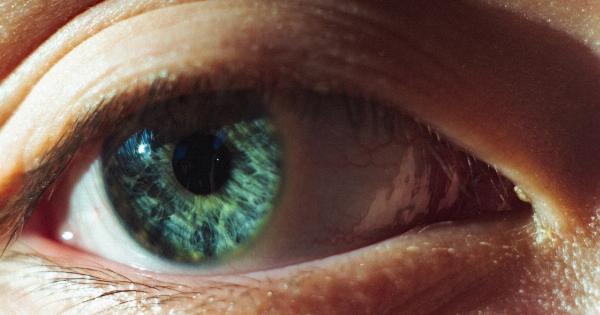Eye bleeding, also known as subconjunctival hemorrhage, is a condition that occurs when blood vessels in the eye rupture and leak blood into the space between the conjunctiva and the sclera.
This can result in a red or bloody appearance of the white part of the eye, causing concern and alarm for many individuals. In this article, we will delve into the causes, symptoms, and potential treatments for eye bleeding. Read on to learn more.
Causes of Eye Bleeding
Eye bleeding can have various causes, including:.
1. Trauma or Injury
One of the most common causes of eye bleeding is trauma or injury to the eye. This can be a result of direct impact, such as getting hit in the eye with a ball or a fist.
It can also occur from rubbing the eye forcefully or inserting foreign objects into the eye. The delicate blood vessels in the eye can easily rupture under such circumstances.
2. High Blood Pressure
Elevated blood pressure can put strain on blood vessels throughout the body, including the small vessels in the eyes. If blood pressure is not well-controlled, it can lead to the rupture of these vessels, causing eye bleeding.
3. Vasculitis
Vasculitis is a condition characterized by inflammation of the blood vessels. When this inflammation affects the blood vessels in the eyes, it can lead to eye bleeding.
Vasculitis can be caused by various factors, including autoimmune diseases, infections, and certain medications.
4. Blood Disorders
Some blood disorders, such as hemophilia or leukemia, can increase the risk of eye bleeding. These conditions affect the body’s ability to clot blood properly, making the blood vessels more prone to rupture.
5. Straining
Excessive straining, such as during heavy lifting or intense physical activity, can cause a sudden increase in pressure in the blood vessels. This sudden pressure can lead to the rupture of blood vessels in the eyes.
Symptoms of Eye Bleeding
In most cases, eye bleeding does not cause any pain or vision changes. The main symptom is the appearance of a bright red or bloody patch on the white part of the eye. The blood may spread, causing a larger portion of the eye to appear red.
Although it might look concerning, eye bleeding is usually harmless and resolves on its own within a few weeks.
Treatment for Eye Bleeding
In the majority of cases, treatment for eye bleeding is not necessary. The blood will gradually be absorbed by the body, and the eye will return to its normal appearance.
However, if the eye bleeding is recurrent or if it is accompanied by pain, vision changes, or other concerning symptoms, it is important to seek medical attention. An eye care professional can perform a thorough examination to determine the underlying cause and recommend appropriate treatment.
If high blood pressure is the cause of eye bleeding, managing and controlling blood pressure through lifestyle changes and medication can help prevent future episodes.
For individuals with blood disorders, appropriate treatments and management strategies can be adopted to reduce the risk of eye bleeding.
Prevention and Self-Care
While eye bleeding is not always preventable, there are steps you can take to reduce the risk:.
1. Avoid Eye Rubbing
Avoid rubbing your eyes forcefully, as this can cause trauma to the delicate blood vessels.
2. Protect Your Eyes
When participating in activities that can cause eye injuries, wear protective eyewear to reduce the risk of trauma.
3. Control Blood Pressure
If you have high blood pressure, work with your healthcare provider to manage it effectively and reduce the risk of eye bleeding.
This may involve lifestyle changes, such as adopting a healthy diet and exercising regularly, as well as taking prescribed medications.
Conclusion
Eye bleeding, or subconjunctival hemorrhage, is a common condition that is usually harmless and resolves on its own. While it can look alarming, it is important to remain calm and seek medical attention only if accompanied by concerning symptoms.
Understanding the causes, symptoms, and potential treatments for eye bleeding can help individuals make informed decisions regarding their eye health. By taking preventive measures and managing underlying conditions, the risk of eye bleeding can be minimized. Stay vigilant and prioritize your eye health.




























